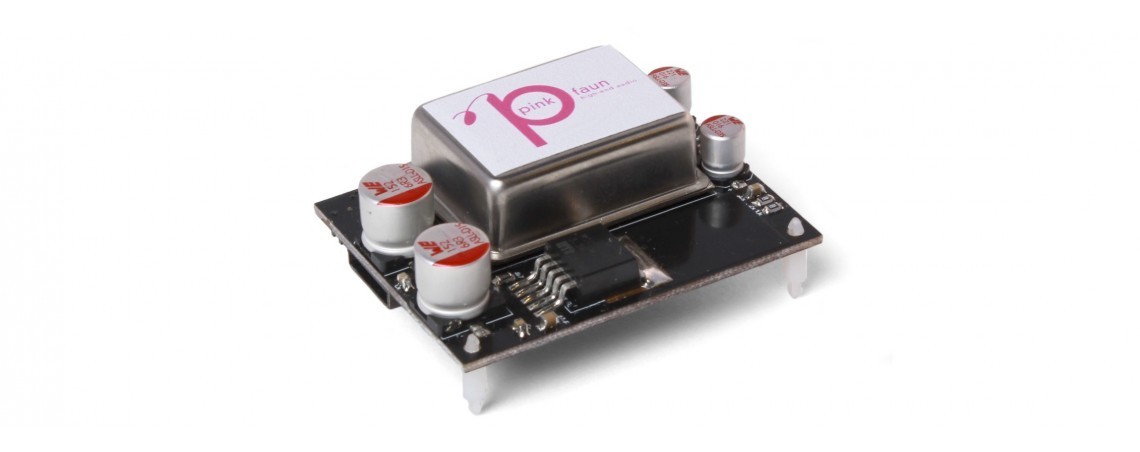The sounds that we hear, coming out of speakers, derive mostly from analog signals. Which processing causes problems of attenuation, noise and deterioration. The only way to get around this, is to convert analog signals to digital sound data, that are eventually processed as analog sound in digital audio devices.
In the process of digitization of analog signals, we are able to reproduce the most natural sound possible at high frequencies and bit rates. Our dedicated, meticulous production of high-fidelity audio systems enables us to diminish noise to the maximum extent, thus improving music quality dramatically and shifting the boundaries of musical experience.
Phase noise and jitter
Faithful reproduction of high-resolution audio sources requires precise digital signal processing and analog sound output with reduced deterioration of the sound source in the digital audio device. This conversion accuracy depends on the noise characteristics (i.e., frequency components outside the target frequency) of the clock frequency of the audio device used.


The clock frequency spectrum for a circuit with zero noise has the form of a straight line (Figure 1, left). However, real-life spectra are modulated by noise and are characterized by an extra frequency component nearby (Figure 2, right) known as phase noise. The phase noise of a clock frequency influences DAC and makes the time interval irregular. This phenomenon is called jitter (see the figure below).


Accurate low-noise clock sources are necessary
In digital audio devices, the phase noise of the master clock influences DAC due to jitter, thereby impeding high-fidelity audio reproduction. To enhance sound reproducibility, a crystal oscillator for a master clock with superior phase noise characteristics (i.e., low jitter) is necessary.
Phase noise is expressed as frequency component levels measured outside a crystal oscillator’s original frequency and is based on the component level of the original frequency. Offset frequency is the departure from the initial frequency and is normally measured in the range of 1 Hz - 1 MHz.
Frequency stability (the characteristic by which frequency does not change over an extended period) is generally seen as an important property of crystal oscillators. However, audio devices require short-term rather than long-term stability. Against such a background, XO’s which have a frequency stability of about ±30 - ±100 ppm, are commonly used for master clocks. High-end audio systems require an OCXO with excellent short-term stability close to the carrier for higher quality sound.
Phase noise and Jitter of clocks
In the simplest terms, phase noise describes the stability of an oscillator in the Frequency Domain while jitter describes stability in the Time Domain.
When we look at a signal in the time domain we see a 'jittery' waveform (see graph), we talking about 'jitter'.  Because the jitter is much smaller than one complete period (see graph), we can say it is caused by 'Phase Fluctuations' (instead of frequency fluctuations). Since these fluctuations are noise, it's actually phase noise. During the development of the Pink Faun Ultra OCXO clock, we focused on reduction of jitter. Using high Q crystal material for the Ultra-low noise OCXO and special circuitry to reduce noise in the oscillator.
Because the jitter is much smaller than one complete period (see graph), we can say it is caused by 'Phase Fluctuations' (instead of frequency fluctuations). Since these fluctuations are noise, it's actually phase noise. During the development of the Pink Faun Ultra OCXO clock, we focused on reduction of jitter. Using high Q crystal material for the Ultra-low noise OCXO and special circuitry to reduce noise in the oscillator.
They are two methods of looking at the same parameter: phase noise looks at the signal spectrum, i.e. in the frequency domain, whereas phase jitter looks at the variations of phase upon the signal. Phase noise characterizes the shape of the frequency spectrum of the oscillator.
The term phase noise is used to describe the noise spectrum resulting from phase jitter that arises as a result of random phase variations of the signal. The noise arises from general noise in the circuit that manifests itself as phase jitter. Since phase and frequency are inextricably linked, this can also be seen as random frequency variations. In high-end audio, the phase noise is incredibly important because phase noise reduces the signal quality and hence increases the error rate of the communications link.





